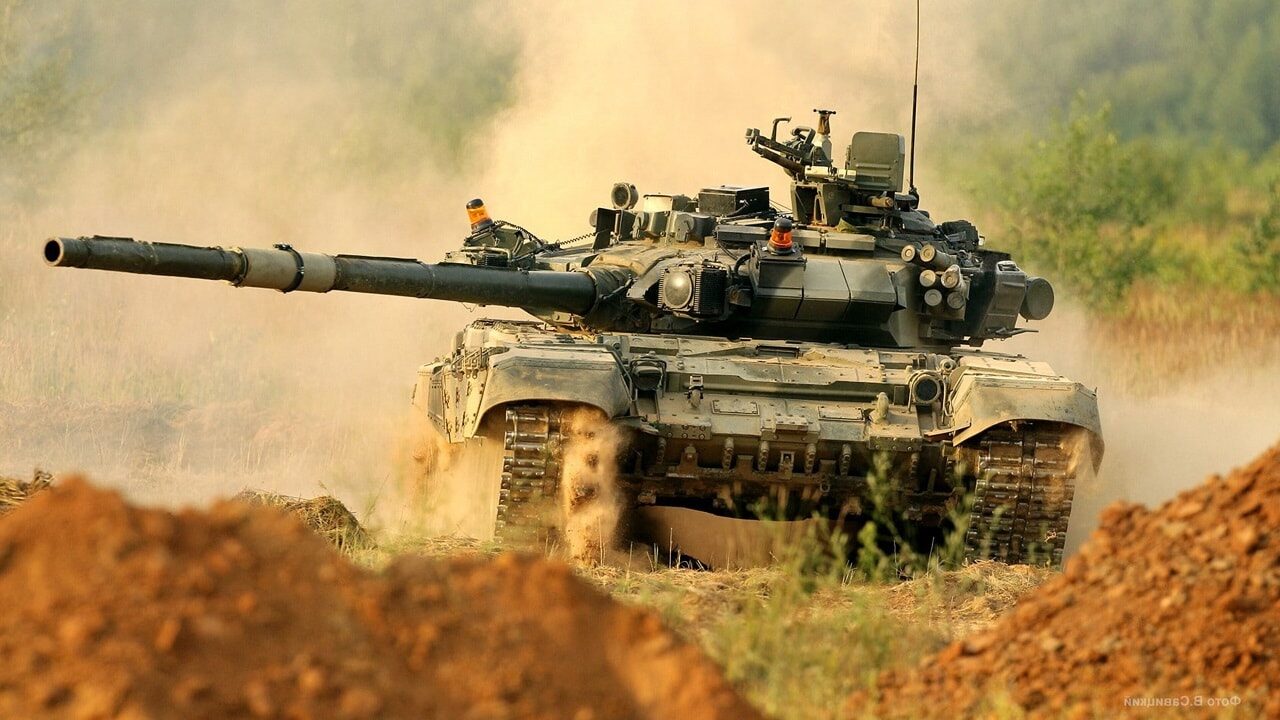Another day, another Russian T-80 main battle tank was destroyed in Ukraine.
And to make matters worse, Putin has lost thousands of main battle tanks in the Ukraine war in just over a year.
Things are so bad that Russia even pulled its best T-14 Armata tanks and keeps losing T-90M tanks – both considered some of the best pieces of armor on Earth.
Massacre: Social Media Shows Ukraine Killing Russian T-80 Tank
In a short clip published by Ukraine Weapons Tracker this week, one of Moscow’s best-armored vehicles was taken out by the Ukrainian 77th Airmobile Brigade near Yahidne, Donetsk Oblast.
The areas surrounding Donetsk City have been plagued by heavy fighting following the 2014 War in Donbas.
Russia’s ongoing invasion has further bloodied the outskirts of the city.
In fact, scores of Russian MBTs including T-80s, T-72s and even T-55s have been obliterated in Donetsk over the last year and a half.
Similar to many of Russia’s weapons systems and military equipment that it deploys in Ukraine, the T-80 was designed and manufactured in the former Soviet Union.
The MBT is derived from its T-64 predecessor and sports some similarities. However, the T-80 superficially appears similar to the T-72 tank.
In fact, Western analysts had difficulty differentiating between the two tank models in the early days of the T-80’s production.
The T-72 was manufactured by the Uralvagonzavod factory in Nizhy Tagil while the T-80 is from the Kirov Factory in Leningrad. Like the T-72, the T-80 features a 125mm smoothbore main gun.
Both tanks also share an incorporated suspension component.
A brief overview of the T-80
Over the years, improved T-80 variants were developed by the Soviet Union. In the late 1970’s, the T-80B variant was produced, equipped with the capability to launch Kobra anti-tank guided missiles and typical munitions.
The most improved T-80 variant is the T-80 U, which is fitted with the advanced 9M119 Refleks anti-tank guided missile system that is designed to strike tanks fitted with explosive reactive armor (ERA) in addition to low-flying targets like helicopters.
As detailed by Army Technology, the T-80 is also fitted with a “125mm 2A46M-1 automatic smoothbore gun with a thermal sleeve, which can fire between 6 and 8 rounds per minute. Loading is hydro-mechanical, with a 28 round carousel container. 45 rounds are carried. The gun fires separate loading projectiles, which have a semi-combustible cartridge case and sabot. Ammunition can be armor piercing, armor piercing discarding sabot, HEAThigh-explosive anti-tank, and HE-FRAG high-explosive fragmentation.”
The T-80 has a poor combat record
Prior to the Ukraine invasion, the T-80 was deployed in the First Chechen War.
Despite the Kremlin’s claims that its newest MBT could wipe out its enemy counterparts, the T-80s quickly fell victim to the Chechen rebels’ RPG-7V and RPG-18 rocket-propelled grenades.
Due to the tank’s failure to perform well in Chechnya, they were not deployed in the 2008 Russo-Georgian conflict or the 2014 Russo-Ukrainian war.
Since Russia’s MBT stockpile has been nearly slashed in half since the onset of the invasion, it makes sense that T-80 variants have been deployed to the frontlines.
Instead of being destroyed by RPGS, these tanks are now being obliterated with sophisticated anti-tank weapons and drones provided to Ukraine by the U.S. and its North Atlantic Treaty Organization (NATO) allies.
Experts estimate that at least 2,000 Russian MBTs have been destroyed, captured or abandoned since February 2022. Considering the wrath of Kyiv’s ongoing counteroffensive, this number will undoubtedly increase.
#Ukraine: A Russian T-80BV tank with a Kontakt-1 cope cage was destroyed by the Ukrainian 77th Airmobile Brigade near Yahidne, #Donetsk Oblast. pic.twitter.com/yzjPOsjfxn
— ???????? Ukraine Weapons Tracker (@UAWeapons) August 11, 2023
Maya Carlin, a Senior Editor for 19FortyFive, is an analyst with the Center for Security Policy and a former Anna Sobol Levy Fellow at IDC Herzliya in Israel. She has by-lines in many publications, including The National Interest, Jerusalem Post, and Times of Israel. You can follow her on Twitter: @MayaCarlin.

